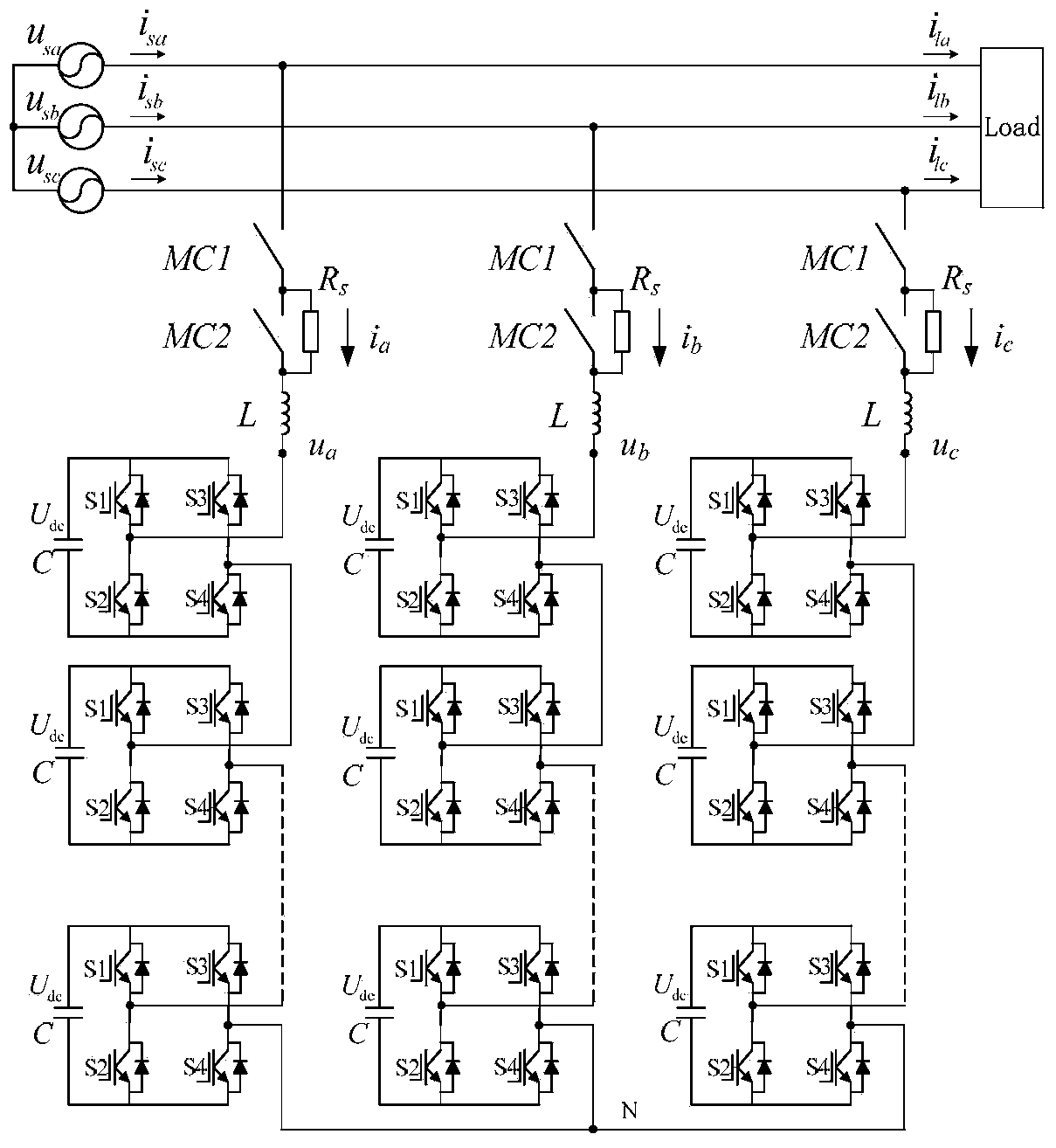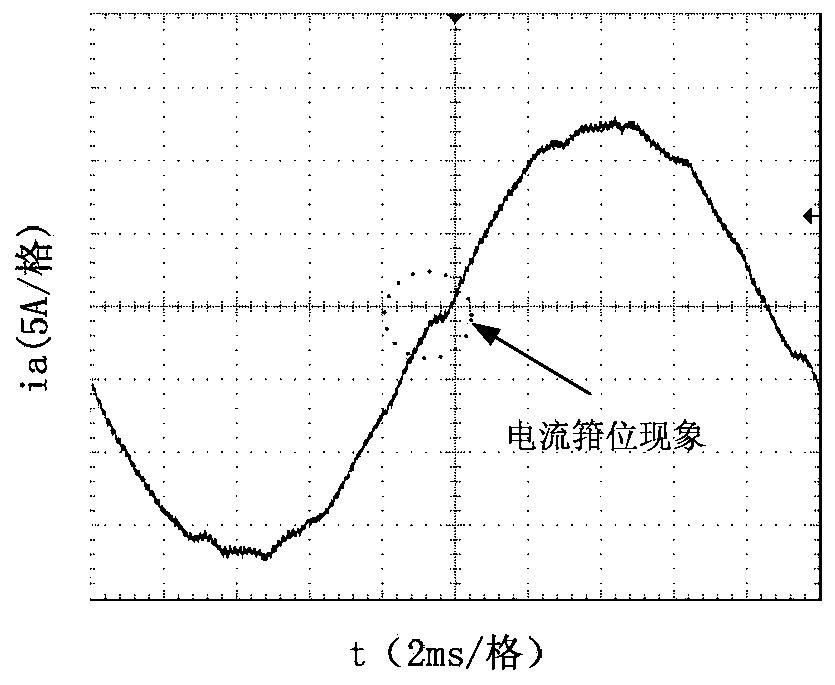Self-adaptation dead-time compensation method for H-bridge cascade STATCOM (static synchronous compensator)
A technology of self-adaptive compensation and dead-time compensation, applied in harmonic reduction devices, AC networks to reduce harmonics/ripples, flexible AC transmission systems, etc., can solve the problem of lack of H-bridge cascaded STATCOM dead-time compensation, etc.
- Summary
- Abstract
- Description
- Claims
- Application Information
AI Technical Summary
Problems solved by technology
Method used
Image
Examples
specific Embodiment approach 1
[0019] Specific implementation mode one: the following combination figure 1 with figure 2 Describe this embodiment, the H-bridge cascaded STATCOM self-adaptive dead zone compensation method described in this embodiment, this method comprises the following steps:
[0020] Step 1. According to the circuit topology of the H-bridge cascaded STATCOM, the discrete mathematical model of the H-bridge cascaded STATCOM under the three-phase coordinate system is obtained;
[0021] Step 2, obtain the transfer function form under the discrete state according to the discrete mathematical model of the H-bridge cascaded STATCOM obtained in step 1;
[0022] Step 3: Using a discrete disturbance observer to conduct real-time online observation of the difference between the STATCOM output voltage and the reference voltage caused by the dead zone effect, and use the observed difference as a compensation amount to introduce it into the H-bridge cascaded STATCOM control system In, the adaptive c...
specific Embodiment approach 2
[0023] Specific embodiment two: this embodiment further limits the H-bridge cascaded STATCOM adaptive dead zone compensation method described in specific embodiment one. In this embodiment, the discrete mathematical model under the three-phase coordinate system in step one is :
[0024] L di a dt = u sa - u a - Ri a L di b dt = u ...
specific Embodiment approach 3
[0032] Specific embodiment three: this embodiment further limits the H-bridge cascaded STATCOM adaptive dead zone compensation method described in specific embodiment one. In this embodiment, in step two, the transfer function obtained under the discrete state is:
[0033] G ( z ) = Z [ H 0 ( s ) · G ( s ) ] = Z [ H 0 ...
PUM
 Login to View More
Login to View More Abstract
Description
Claims
Application Information
 Login to View More
Login to View More - R&D
- Intellectual Property
- Life Sciences
- Materials
- Tech Scout
- Unparalleled Data Quality
- Higher Quality Content
- 60% Fewer Hallucinations
Browse by: Latest US Patents, China's latest patents, Technical Efficacy Thesaurus, Application Domain, Technology Topic, Popular Technical Reports.
© 2025 PatSnap. All rights reserved.Legal|Privacy policy|Modern Slavery Act Transparency Statement|Sitemap|About US| Contact US: help@patsnap.com



